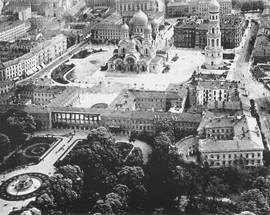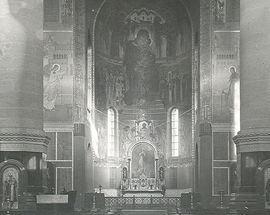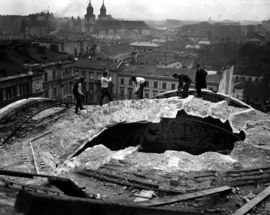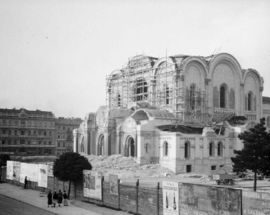Lost Warsaw: St. Nevsky Cathedral
more than a year agoCommissioned by the Governor General of Poland, Joseph Vladimirovich Gourko, work commenced on St. Alexander Nevsky Cathedral in 1893 and continued until 1914. Earmarked to serve as place of worship for Warsaw’s ruling Russian community the building was the work of the architect Leontij Benois, a professor in The Tsarist Academy of Fine Arts in St Petersburg.
The site, on what is today Pl. Piłsudskiego was not chosen by accident; in 1840 the same patch of land was occupied by an obelisk commemorating Polish generals who had collaborated with the Russians during the 1830 November Uprising. It was financed by huge taxes levied by the insufferable Gourko, as well as a collection of funds ordered by Tsar Alexander III, though Russia’s looming economic crisis meant that construction took 18 years.
The results though were staggering. Consisting of five gold plated domes, and a 70 metre bell tower (then the tallest building in Warsaw), the cathedral proved even more dazzling on the inside. Raising comparisons to St. Mark’s in Venice, copper and oak main doors led to an interior dripping with oil paintings and icons. Sixteen mosaic panels were designed by Viktor Asnetsov, and the building was heavily adorned with precious stones. The cathedral operated as a Russian shrine until 1915 when Warsaw was captured by German forces. The next three years saw it function as a German military church, though the moment Poland gained independence plans were floated to demolish this symbol of Russian hegemony. The debate on what to do with it reigned for years, with arguments including that the building had no artistic value, that the square needed to be freed up for military parades and that the foundations were already sinking.
Finally in 1922 the tower was taken down, and between 1924-1926 some 15,000 detonations were set off to rid Warsaw of the cathedral. Not one to miss a mark, the Warsaw magistrate sold public bonds so as to allow every Pole the chance to take part in the iconoclasm. The resulting rubble was used to strengthen the banks of the Wisła and the rescued Finnish granite put to effect in many Warsaw churches.
Of the surviving decorations a few of the mosaics can now be viewed at the St. Mary Magdalene Church in Praga (one of only two Warsaw orthodox churches to survive the 20s), pulpit and altar pieces in the Sts. Peter and Paul Church in Pyry and icons in the Pokrovy Orthodox Church in Baranowicze, Belarus.
/warsaw/orthodox-cathedral-of-st-mary-magdalene_18407v
Constructed between 1867 and 1869 to a design by Mikołaj Syczew, St. Mary Magdalene’s was originally built for the large congregation of Russians living around …







Comments